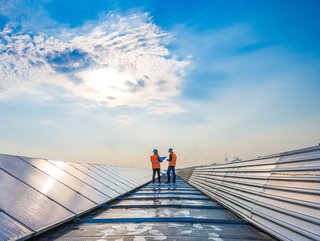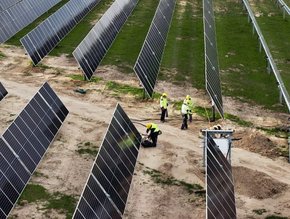Tandem cells to increase solar panel efficiency by 50%

A South Korean company has made a groundbreaking achievement as they unveiled the world's first production line dedicated to perovskite-silicon tandem solar cells. These innovative solar cells have the potential to boost efficiency by 50-75% compared to standard solar panels.
The commercialisation of perovskite-based solar cells marks a significant milestone after years of advancements with the mineral. It has widely been regarded as a “miracle” material capable of revolutionising various industries, including renewable energy.
The next-generation solar cell technology
Qcells, based in Seoul, has committed a substantial investment of US$100mn to bring this next-generation solar cell technology from the realm of lab tests and academic research to practical application.
A pilot production line to be operational by late next year will be funded by the investment at a factory in Jincheon.
“This investment in Jincheon will mark an important step in securing technological leadership,” said Justin Lee, CEO of Qcells. “With a global R&D network spanning from Korea, Germany and the US, Qcells will ramp up its efforts to produce high-efficiency advanced tandem cells.”
Improving sufficiency
Tandem solar cells offer a significant enhancement to the efficiency of conventional solar panels, by dividing the light spectrum and optimising energy extraction from each segment to generate electricity.
In fact, the world record for solar cell efficiency stands at 32.5%, achieved with a perovskite-silicon tandem cell. In contrast, traditional silicon-based solar cells typically reach only around 22% efficiency.
This signifies that nearly one-third of solar radiation can be efficiently converted into electrical energy.
The development of tandem solar cells represents a promising leap forward in harnessing solar energy more effectively and surpassing the limitations of conventional silicon-based technologies.
- How Greensparc is Bringing Renewable Energy to Rural AreasUtilities
- ZOLA: Fighting for energy equality backed by GE, EDF & TeslaUtilities
- ABB provides renewable power solutions to Kinross gold mineRenewable Energy
- SSE generates clean energy at the largest offshore wind farmRenewable Energy






